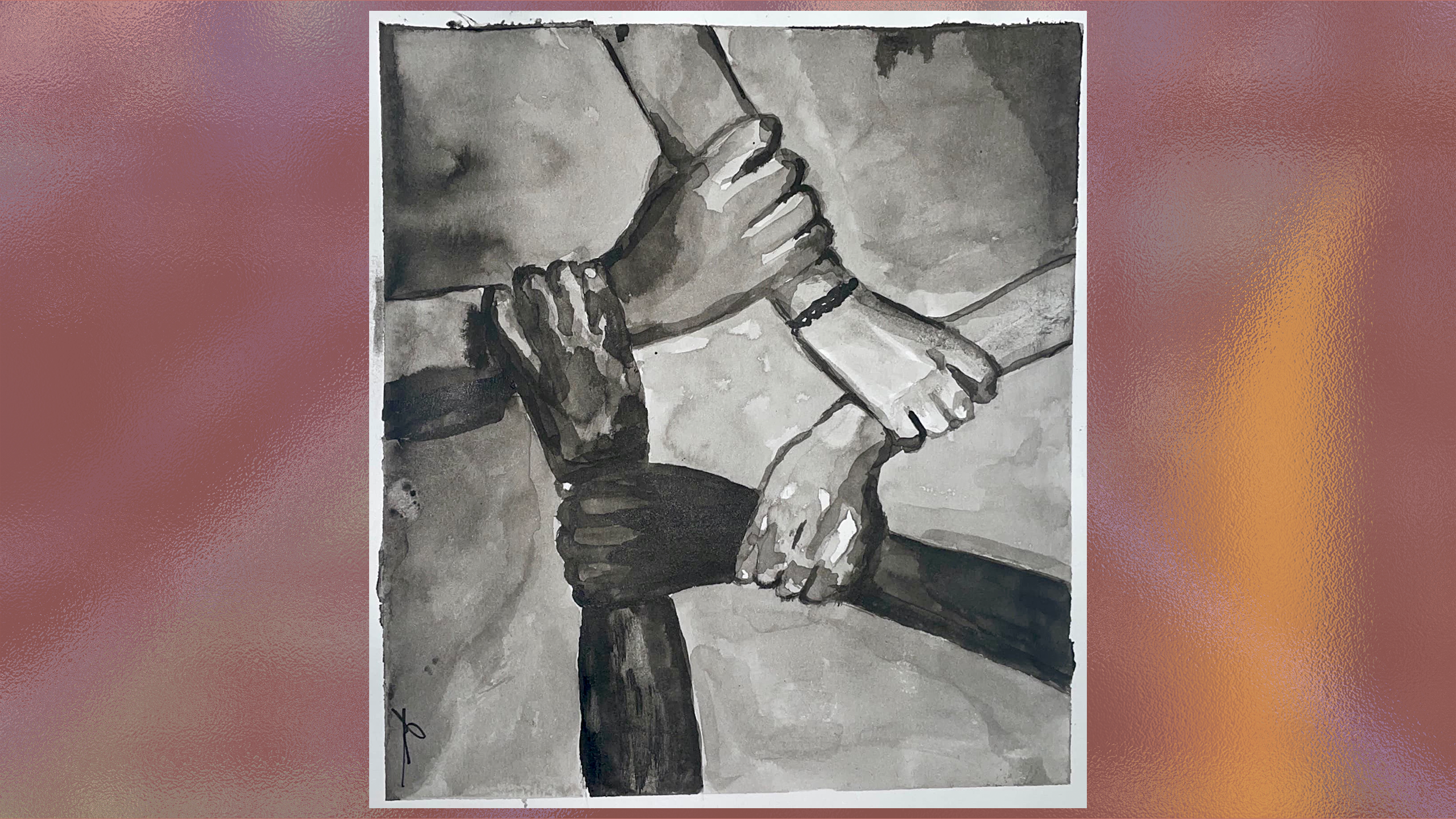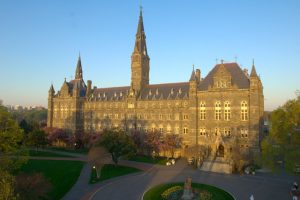After my sophomore class finished the last chapter of Huckleberry Finn, my high school English teacher smiled expectantly. “Alright everyone! Today, we will be debating the censorship of the n-word in Huck Finn! Any thoughts?” The atmosphere grew tense. I looked around at my classmates: all Asian with a few white faces. Stunned, no one felt qualified to speak. Were we really going to discuss the n-word without any Black students in class? The lack of diversity in my classrooms had never been more apparent.
Five years later, I still think about that uncomfortable moment as a junior at Georgetown. Without diversity in classrooms, I felt ill-equipped to critically engage and empathize with different perspectives. That lack of diversity is directly predicated on a system that prizes meritocracy—one that hurts us all.
What exactly is meritocracy? At Georgetown, meritocracy manifests in long club applications or the consulting pipeline students flock to. For my high school, it manifests in a race-blind, need-blind admissions system. The overarching idea is that your efforts, regardless of your background, determine the outcome.
I went to Thomas Jefferson High School for Science and Technology (TJ) in Northern Virginia. As a STEM magnet school, TJ is considered a bastion for academic achievement—#1 in the 2021 U.S. News ranking of public high schools. With its wealth of talent and resources, 100 percent of TJ students graduate, while the national rate is 88 percent. TJ is incredibly similar to Georgetown in the sheer access that comes with attending an elite institution. One round of emails with a TJ or Georgetown alum and the job is yours. But getting into TJ is a process riddled with inequity because of its meritocratic admissions process.
TJ has always faced criticism for its lack of racial and socioeconomic diversity. During the 2020 George Floyd protests, Fairfax County released admissions statistics for TJ’s Class of 2024. 73 percent of the incoming class was Asian, and so few Black students were admitted that the school didn’t release exact numbers because it was considered “too small for reporting.” TJ alumni, teachers, parents, and students pushed for policy change, and the administration implemented a new holistic approach that guaranteed spots for underrepresented middle schools and scrapped standardized testing requirements in 2020. As a result, the class of 2025 is TJ’s most diverse in recent years. But the current demographics of TJ remain unrepresentative of Fairfax County.
Marginal gains have come with backlash. On one side stands the Coalition for TJ. They argue the new changes unfairly reduce the number of Asian American students admitted to TJ and dilute the school’s tradition of hard work and merit. While they acknowledge the importance of diversity, they insist change should be achieved by reforming the academic pipeline. Support test-prep opportunities, reenergize elementary STEM, supply better teachers for underrepresented minorities, but don’t mess with the purity of meritocratic admissions. In favor of the Coalition for TJ, a federal judge recently ruled that the new holistic admissions process illegally discriminates against Asian Americans on the basis that it would leave them “disproportionately deprived of a level playing field.”
This ruling obscures the benefits from increased diversity and a holistic approach.
A major concern of the holistic approach is that TJ’s rankings may decrease. Even if a program is highly reputable, what is the point if students can’t access it? And access is bumpy: Seniors who participated in the flagship Mentorship Program that connect students to professionals needed a car or a parent with time to drive them. Assumed privileges bar students from equal access to opportunities.
So how should equality of opportunity be ensured? I acknowledge that the Coalition’s proposed reforms would be beneficial—I too would love more STEM elementary programs. But without a fundamental admissions change and a reconception of what the system stands for, these reforms do not address deeper structural inequities.
Worship of meritocracy at the expense of inclusivity is strongly paralleled at Georgetown. In selective clubs, resumés—a classic symbol of meritocracy—are often required in applications. And I get it—a school or a club has limited capacity, so some paradigm has to be involved in selection. But it’s not necessarily right that the default means of determining who “deserves” to get into a club is one that requires credits to your name. Perhaps what matters more is how open-minded or dynamic students are—or the diversity of experiences at the table. If we continue to abide by the logic of meritocracy and select the cream of the crop, what system of privilege is perpetuated? What purpose is education supposed to serve?
For the Coalition, TJ is an end goal that families earn. But TJ is just a launching pad for STEM careers. It is a place meant to cultivate potential, not decide it. The same can be said of Georgetown. In preserving an ‘elite’ status, the university tends to forget that for many, Georgetown is a place where opportunity starts. Often, efforts to maintain reputation only gatekeep students who can benefit the most from education. On a more fundamental level, preventing access for Black and brown students is just wrong. By systematically excluding underrepresented minorities, TJ, Georgetown, and other elite institutions are failing to provide a life-changing opportunity to all untapped talent.
The TJ Alumni Action Group, an organization that fights for admission reforms, believes this failure must be addressed. They emphasize that increased diversity is not a you-win-I-lose situation. Adopting a holistic admissions system doesn’t directly decrease academic quality—it can actually lead to increases. Research shows that hearing different perspectives provokes more thought than hearing those of someone with a similar identity. While I question the obsession with status, the idea that diversity and academic excellence are tradeoffs is false to begin with.
Holistic admissions processes are not designed to reduce the number of Asian American students, but to uplift those who have been historically disadvantaged in pursuing their educations. I also urge administrators, students, and other stakeholders to be mindful of the inherent biases towards the Asian American community in application processes. We are neither a monolithic population, nor stereotypical brainiacs overtaking America’s education system. The conversation around meritocratic admissions that dominates elite institutions promotes an us-versus-them mentality that drives a wedge between minority groups.
As an Asian American student, I want more underrepresented minorities in ‘elite’ institutions. Instead of thinking of educational opportunities as a zero-sum game, we need to think of DEI initiatives as a win-win. With GAAP weekend on the horizon and the next crop of Hoyas approaching, I urge elite institutions, like Georgetown or TJ, to seriously reconsider their purpose in a system that prioritizes merit over access in whom they welcome.





